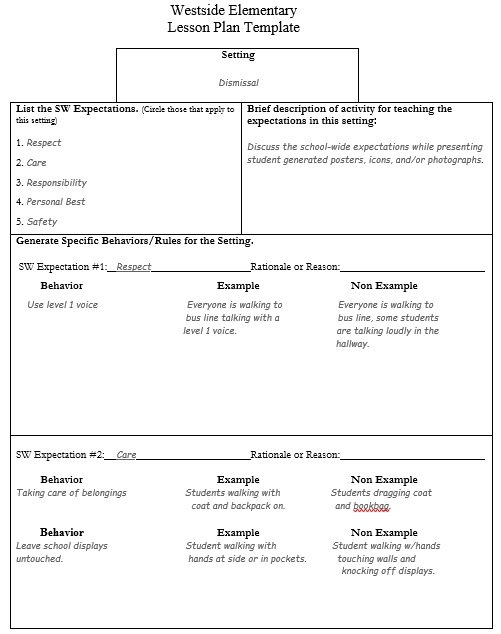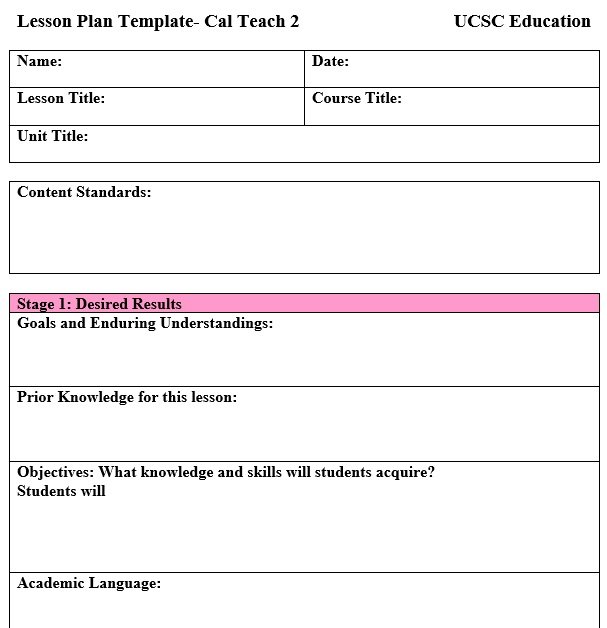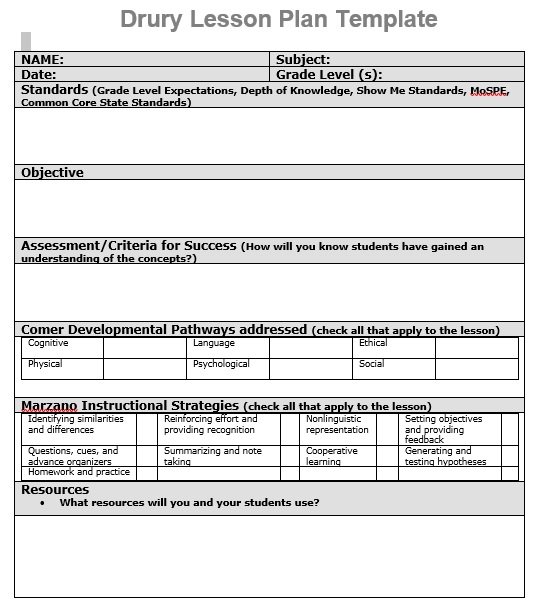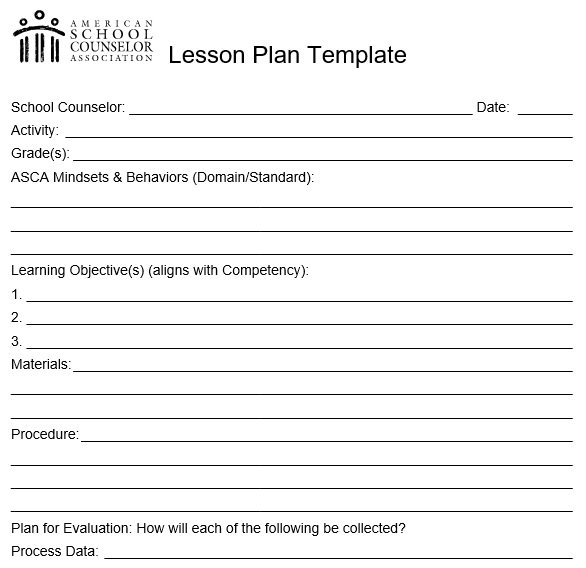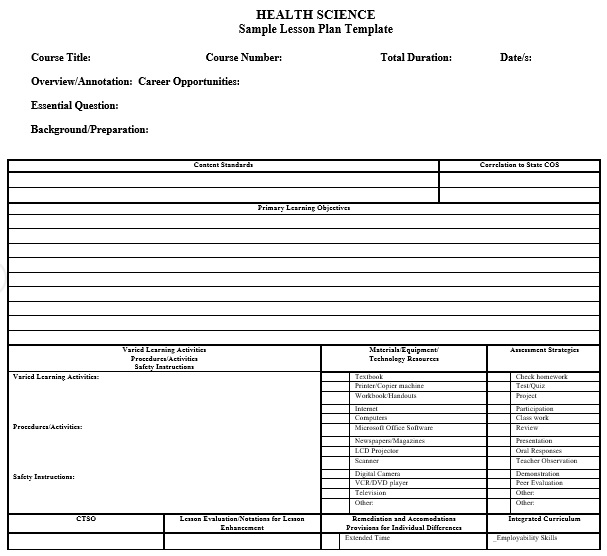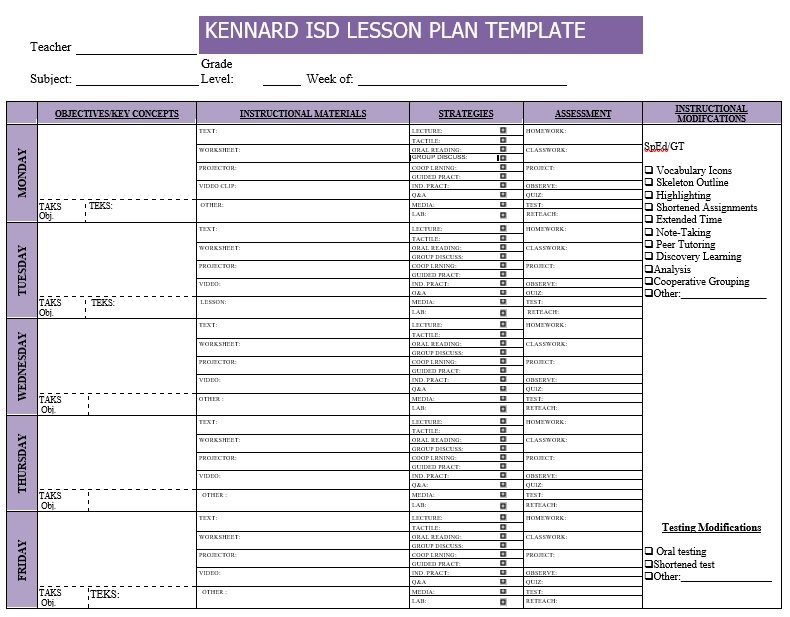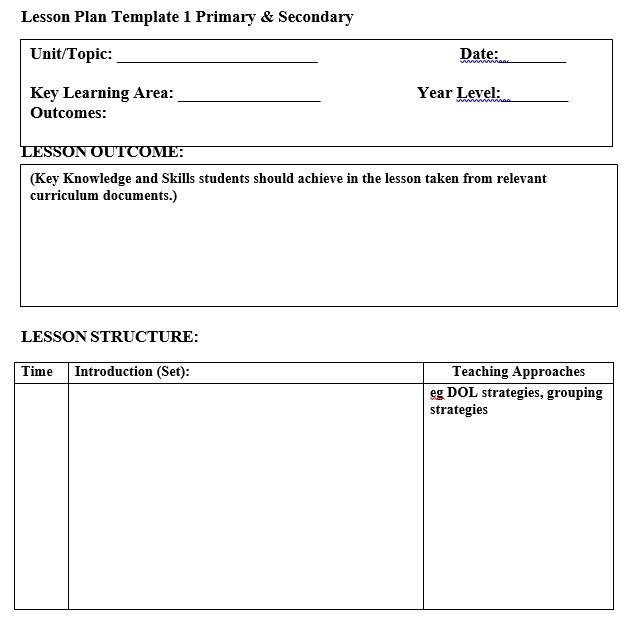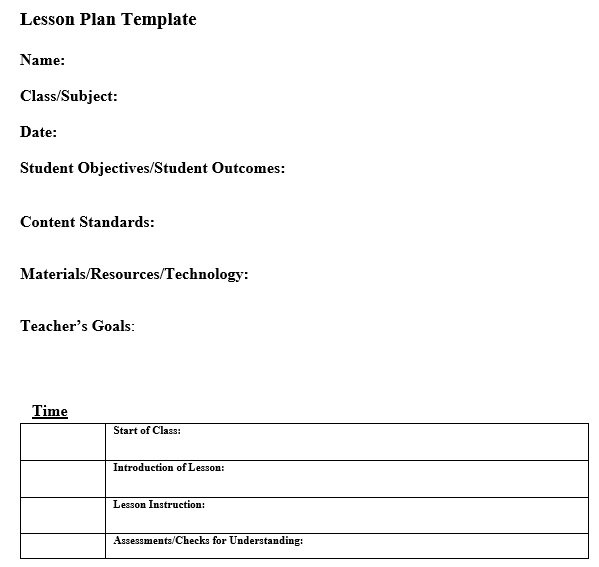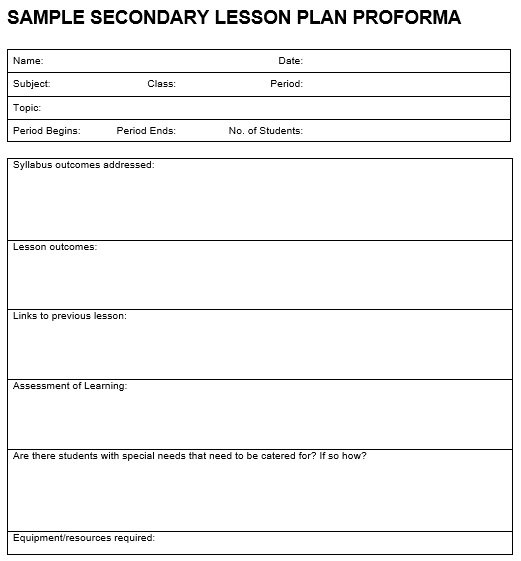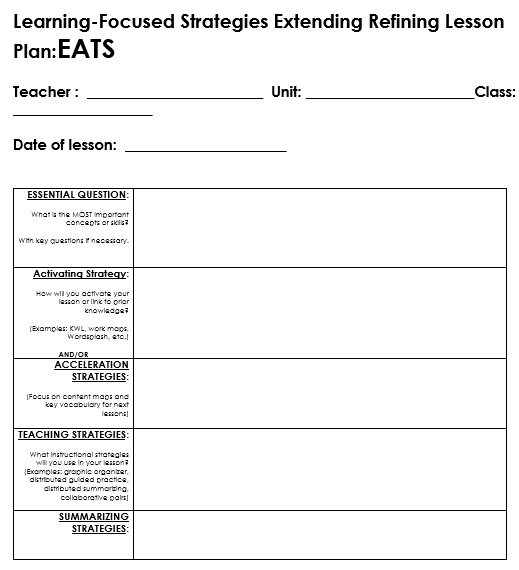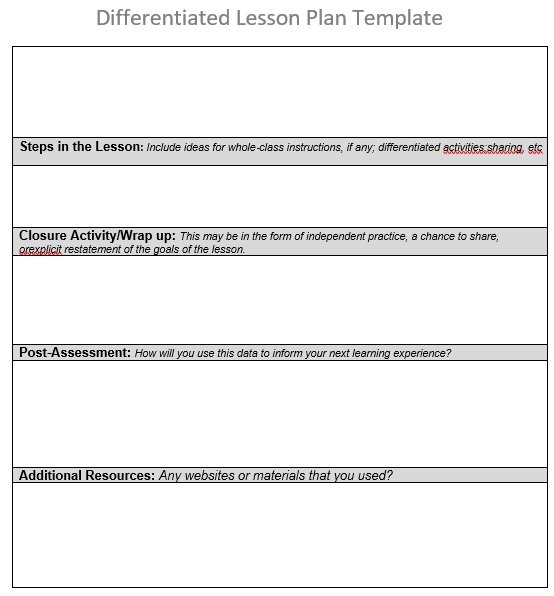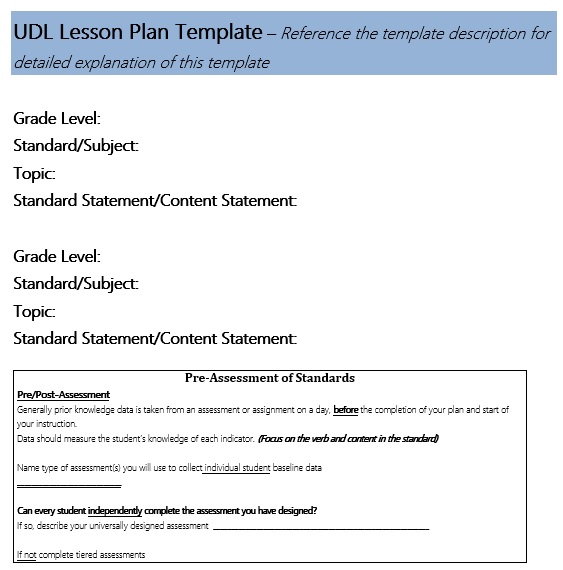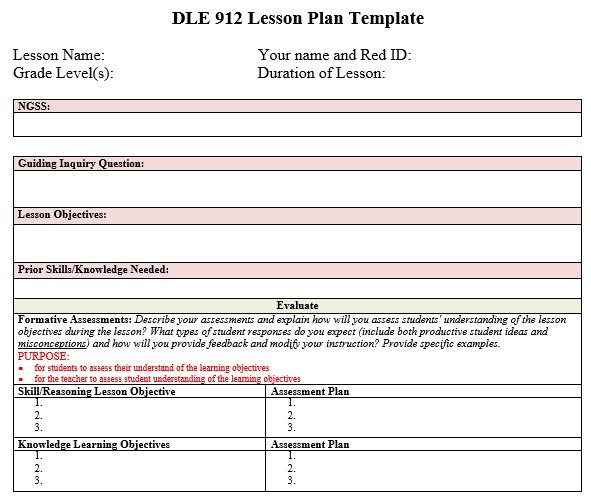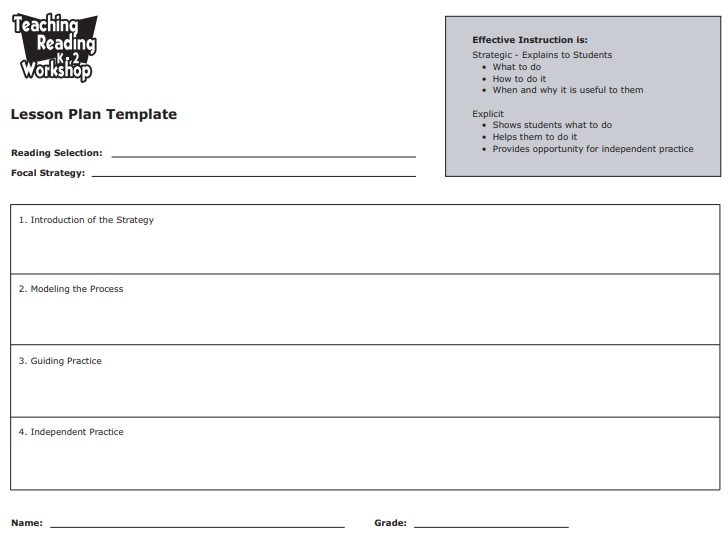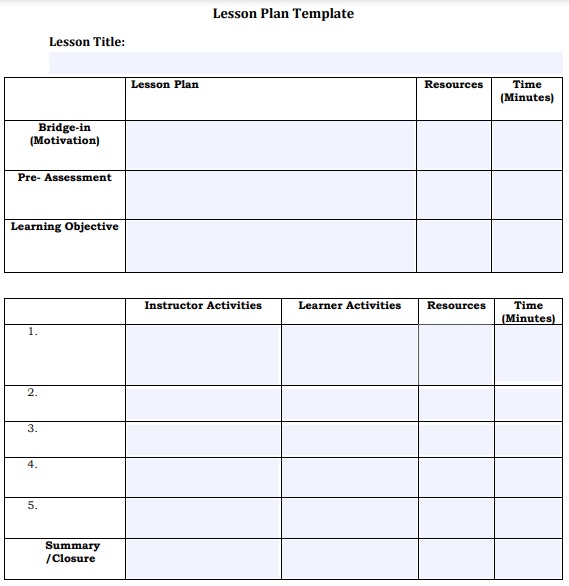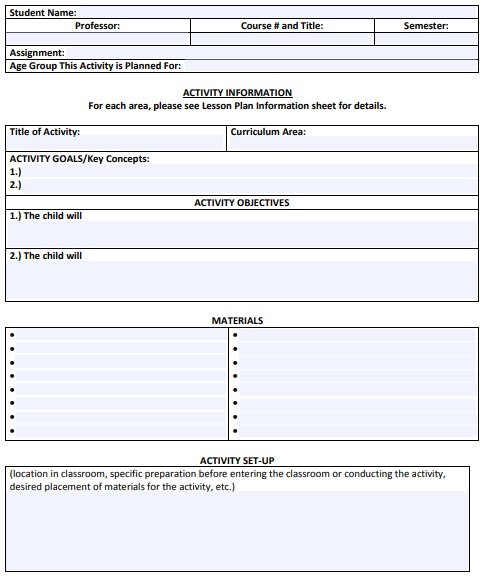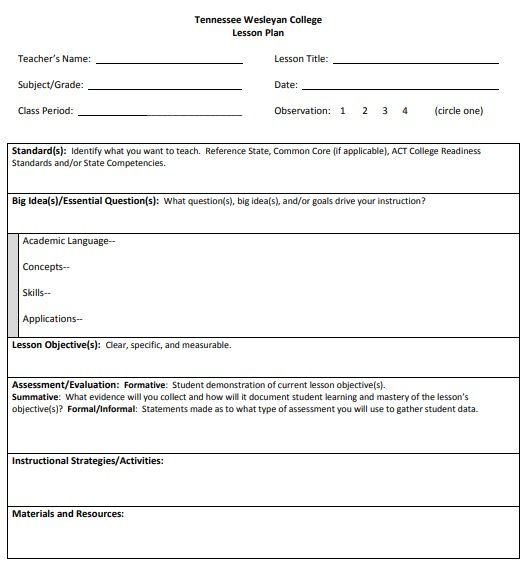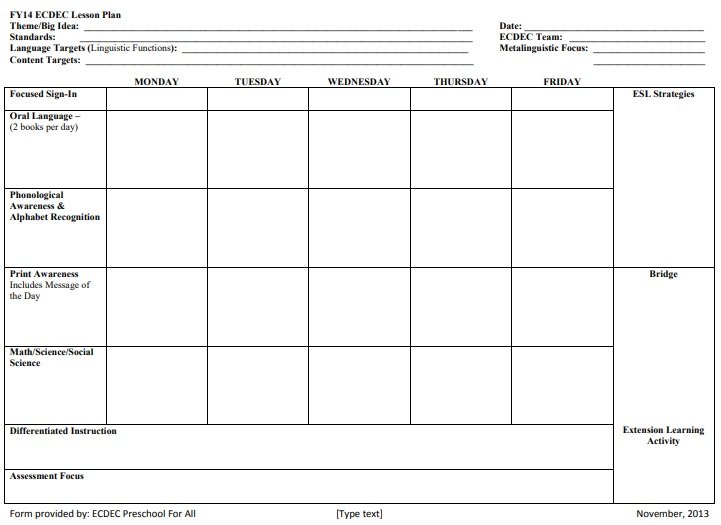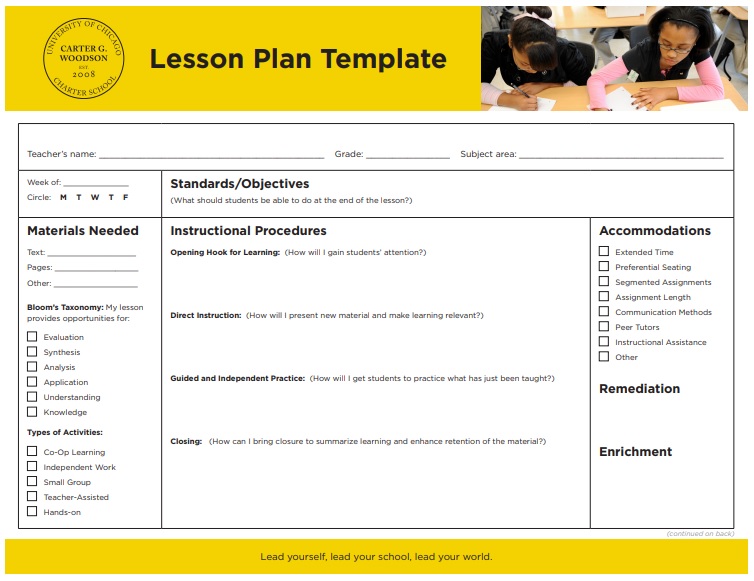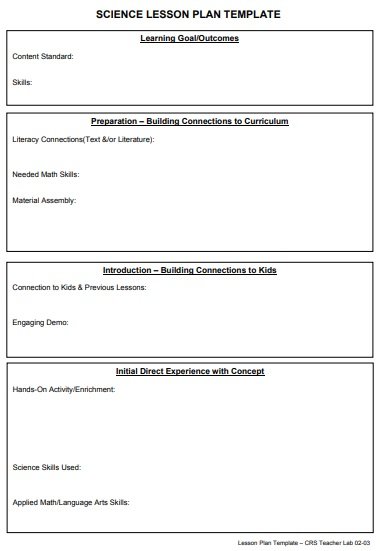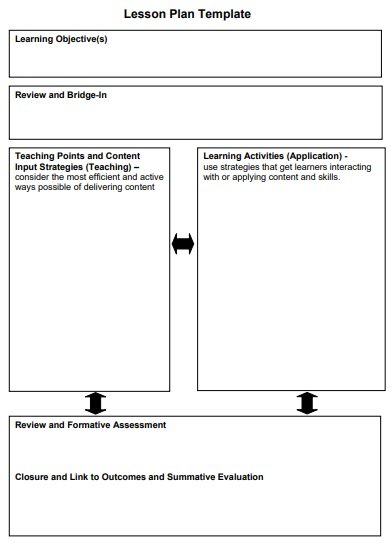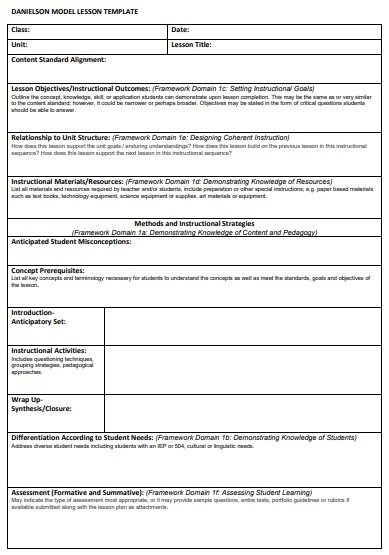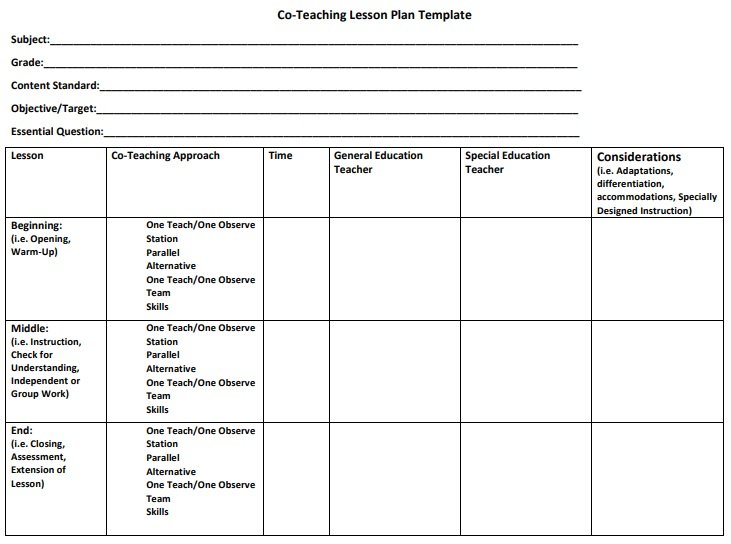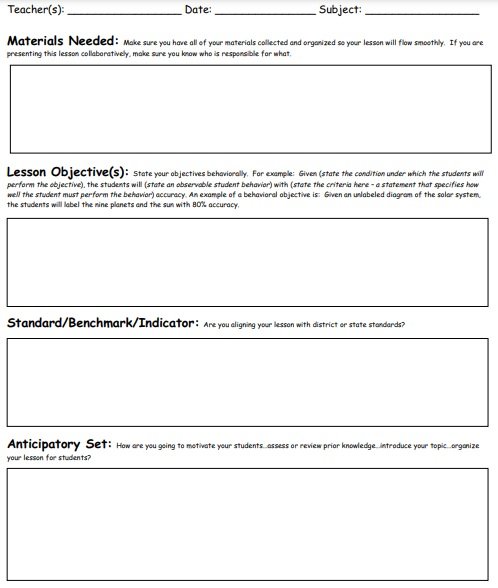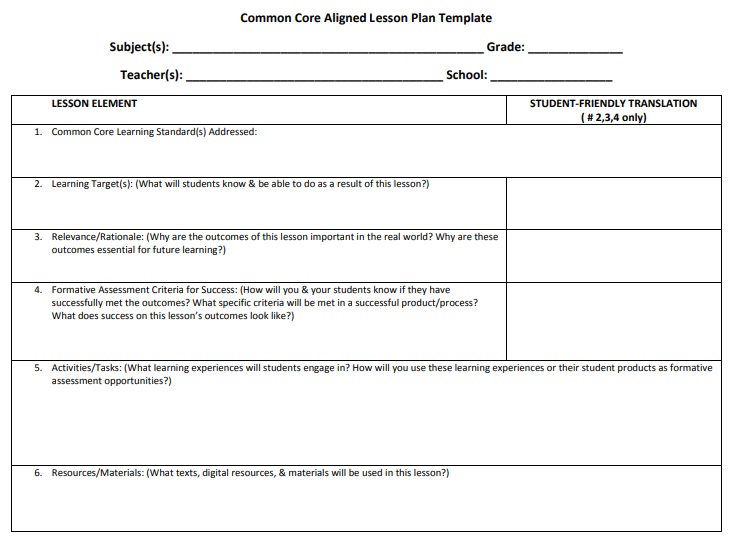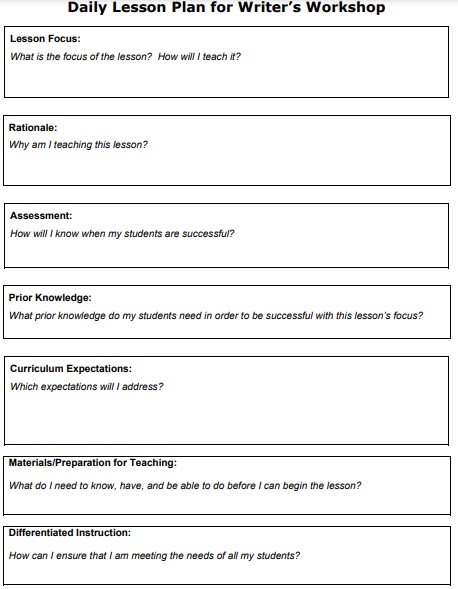A lesson plan template indicates where to start and where to finish. It is the map that every teacher needs. Lesson plans are usually in written form. They explain how teachers intend to conduct their classes. Additionally, they illustrate what teachers aim to achieve from it and how they intend to achieve what they aim.
Since there are different types of teachers so there are also many different types of lesson plans. You can find them on different websites. Moreover, trainee teacher requires a detailed lesson plan to produce. These detailed plans along with class activity must contain instructions and questions they will provide the class. Also, include the duration of each activity.
The experience teachers also require the plan to be fairly comprehensive. However, when teachers become experienced and confident, planning is still important. But now they can plan quickly and without much detail. The highly experienced teachers should also take plan or short notes with them into the classroom. Planning is important for everyone because without it you don’t know where to start.
Table of Contents
Different types of lesson plan templates:
Common core lesson plan:
It includes all the things that are the part of a common core lesson plan. Common core lesson plans are the plans designed to helps student perform better in different subjects like Science, Algebra, reading comprehension, etc.
Preschool lesson plan:
As its name implies, it is the lesson plan for preschoolers. It may include worksheet and activities. With the help of a preschool lesson plan template, you can find out what to include.
Weekly lesson plan:
These are the lesson plan for a particular week. It includes the activities and assignments that are carried out during the week. By using the template, teachers can create effective weekly lesson plans.
Basic qualities of well-written lesson plan:
Let us discuss three basic qualities of well-written lesson plan;
- A considerable amount of time is required in order to create a well-written plan. If you create it within a few minutes then you are heading for trouble.
- A well-written plan contains idea about how you should conduct things in your classroom. This plan suggests the approach that teacher should take to teach students about a particular subject. It enables the teachers to make their own decision regarding what they should and should not use.
- A good lesson plan includes a lot of information. It includes the problems that you have to encounter during the course of a lesson. Moreover, the lesson plan also contains solutions to these problems. It has a step-by-step guide which tells you what to teach and at what time.
Components of a good lesson plan:
Below are the eight components that every good lesson plan contains;
Objectives:
The main component of a good lesson plan is objectives. Without objectives, it is just a simple piece of paper. So, in this section, you should precisely describe goals that your students have to accomplish once the lesion in concluded.
Anticipatory set:
After objectives, there comes anticipatory set which is the second most important component of a good lesson plan. Gather your students and inform them what the anticipatory set does. The anticipatory set does two things. The first one is it sets the lesson tone and the second is it motivates the students to learn more. It is just like a movie trailer. As movies trailer doesn’t reveal the whole story, the anticipatory set does the same for a lesson plan.
You need to set the stage for your students by exploring previous knowledge and providing the objectives a context. Do this before digging into your lesson’s instruction meat. Provide a synopsis of what you will present to your students in the anticipatory set before the lesson’s direct instruction starts.
Direct instruction:
Here you will present the outline that how you will present the concept of the lesson to your students. Examples of direct instruction method are;
- Using props
- Expressing physical examples of the subject matter
- displaying diagrams
- Reading a book
Required resources:
Write down all the required resources for a lesson. To successfully execute the plan, find out the required resources. If you fail to mention the required resources then your plan is nothing more than a piece of paper. Therefore, list down all the required resources in order to successfully implement the plan.
Guided practice:
In this section, include the activities that the students have to be performed under your supervision. The guided practice can be explained like collaborating or individual learning.
Closure:
In the closure section, explain how you will close the lesson. By closing a lesson plan and making information more helpful for the students, it is referred as closure.
Independent practice:
It indicates how your students will exhibit either or not they understood the learning objectives of the lesson. It contains the ways that student will use in order to complete a task without the guidance of the teacher. It harmonizes the student’s new knowledge and reinforces skills. Homework assignments and final projects are the examples of independent practice.
Assessments and follow up:
Without students completing a worksheet your lesson plan doesn’t complete. After completing a worksheet, the next section of the lesson plan comes and it is the assessment section.
How to write an effective lesson plan?
Here are the steps to follow for writing an effective lesson plan;
Identify the scope of your lesson
Firstly, you have to determine whether you are making a plan for the whole lesson or just a day, a week, or a unit. However, it depends on a number of factors. Teachers usually prefer weekly lesson plans. Make these plans specific and detailed that pay attention to the short-term objectives and tasks of a lesson.
Furthermore, you can also gather regular feedback through weekly lessons. If you want to inform your students about the core objectives of the overall lesson then you should make a detailed lesson plan for the whole course.
Determine key learning objectives
You have to write down the objectives and goals of your lesson after finalizing the scope of your lesson. You can also make a list or table of key learning outcomes along with a precise description. Students by determining lesson objectives will know what to expect from your lesson and why they’re here.
Plan specific activities
In the next step, you have to pay attention to the actionable side of things that your students are going to do in the lesson. The specific activities and tasks that are involved in class, plan out them. This may include the following;
- Opening discussions
- Workbook activities
- Readings
- Asking questions
- Presenting or watching educational videos
Mention the required materials
In your lesson plan, mention the materials that your students need in the lesson such as stationery, notes, books, apps, or any other tools. In this section, you can also specify any recommended resources like websites, books, libraries, etc.
Make a timeline
You have to set realistic time slots to organize all your lesson activities and ensure all topics get enough attention. The kind of timeline you make depends on the structure of your lesson plan. You can divide activities and tasks by day in case you’re writing a weekly lesson plan.
Add an empty section for notes and feedback
You must leave space for notes and feedback in your lesson plan so that students can take notes and write down important points. This section can use as a space for feedback. You can also ask your students to give feedback and leave comments on the overall lesson and the instructor at the end of each session.
Conclusion:
In conclusion, a lesson plan template makes the teachers able to create an effective lesson plan for their students. It is the best way to find out what to include in your lesson plan. We have discussed the most important components of the lesson plan that every good lesson plan must contain. Both experienced and inexperienced teachers should make lesson plan because without it they don’t know where to start.

